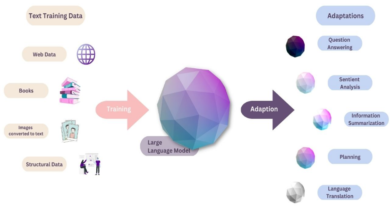Boosting Morale and Productivity: The Importance of Employee Appreciation

Acknowledging an individual’s hard work and success is a basic human need and a cornerstone of a thriving corporate ecosystem. In today’s high-performance work environments, a moment of recognition with thoughtful employee appreciation gifts can resonate deeply, engendering a sense of belonging and reinforcing a positive work culture.
Introduction to Employee Appreciation
Employee appreciation transcends the simple act of saying ‘thank you.’ It’s a strategic approach that can manifest in various forms, from verbal acknowledgment in a public setting to providing personalized employee appreciation gifts. While appreciation can be shown in moments of high achievement, it is equally crucial during regular day-to-day operations. Refraining from recognizing the consistent efforts of employees undermines the potential for cultivating a loyal and engaged workforce. Consistent and sincere recognition helps build a company’s internal brand and a positive company culture.
The Science of Gratitude in the Workplace
The positive dynamics of gratitude within a workplace are profound. According to research, expressing gratitude has a dual benefit for both the giver and the receiver. It enhances well-being, reduces stress, and encourages social bonding. Put practically, motivated staff members are likelier to be dependable, productive, and eager to go above and beyond. They also tend to have better workplace relationships, enhancing teamwork and reducing friction that can inhibit fluid company operations.
Innovative Ways to Celebrate Employee Accomplishments
Recognition should not be confined to traditional awards and typical ‘Employee of the Month’ programs. Many organizations now opt for more innovative approaches, such as skill development opportunities, unexpected time off, or spotlighting accomplishments on company social media channels. A crucial element in celebratory practices is personalization; when appreciation reflects an understanding of the individual’s professional aspirations and personal preferences, the sentiment carries more weight. Leaders who listen to their employees and celebrate in ways that resonate with them individually will see a more profound impact.
Cost-Effective Strategies for Small Businesses
Small and mid-sized businesses often have limited budgets, yet fostering a culture of appreciation is not necessarily cost-prohibitive. Public praise, social media recognition, flexible hours, or a simple handwritten note are cost-effective ways to make a significant difference. Implementing peer recognition programs, where employees celebrate each other’s accomplishments, can also reinforce positive dynamics within the team. Using digital platforms for recognition allows for a scalable and resource-efficient way to express gratitude and praise.
The Role of Leadership in Employee Recognition
The impact of leadership in driving a culture of employee recognition cannot be overstated. Leaders must consistently model the behaviors they seek to instill within their organizations. Leaders need more than delegating the recognition task to HR departments; they must actively participate and invest time acknowledging their team’s efforts. By doing so, leaders sow the seeds of an appreciative culture permeating every level of the organization. Moreover, a consistent and impactful recognition program must equip managers with the proper training to recognize and reward their direct reports.
Organizing Memorable Employee Appreciation Events
Events specifically designed to celebrate employees can leave a lasting impression. Whether it’s an end-of-year party reflecting on achievements or a team-building retreat focusing on wellness, these occasions become markers of appreciation in the organization’s collective memory. The key is to ensure that events are aligned with the company values, mission, and the employees’ interests. Including employees in the planning process can provide valuable insight into what they find meaningful and enjoyable, making the event more impactful and anticipated.
Measuring the Impact of Appreciation on Performance
Companies should measure the effects of appreciation efforts to optimize them. Soliciting feedback, monitoring employee engagement levels, and analyzing productivity metrics can offer insights into recognition programs’ effectiveness. Adjustments can then be made to enhance their impact. Measuring satisfaction and performance allows companies to tailor their strategies, genuinely resonating with their workforce and ensuring sustained positive effects.
Global Perspectives on Employee Appreciation
A global workforce requires a nuanced approach to recognition. As emphasized in a Forbes article on the topic, understanding global perspectives on employee appreciation is imperative. There’s no one-size-fits-all solution; recognition practices must be adapted to suit various cultural norms and individual preferences. This cultural sensitivity can reinforce a workplace’s inclusivity, ensuring employees feel valued and respected in their unique context.
The Future of Employee Recognition
Employee recognition is evolving, with technology playing an increasingly significant role. The future looks promising, with augmented reality recognitions, gamification of achievements, and instant peer-to-peer rewards via mobile apps being explored. Businesses that keep up with these trends and include them in their appreciation procedures will probably be ahead of the curve and retain a team that is driven and focused on the future.
Cultivating a Sustained Culture of Appreciation
Creating a lasting culture where recognition is deeply embedded is at the heart of every successful employee appreciation initiative. Consistently showing genuine gratitude is not just lovely; it’s essential for an organization’s well-being and effectiveness. By valuing employees’ contributions, companies cultivate a work environment where loyalty, innovation, and productivity thrive, fortifying the organization’s overall health and success.



